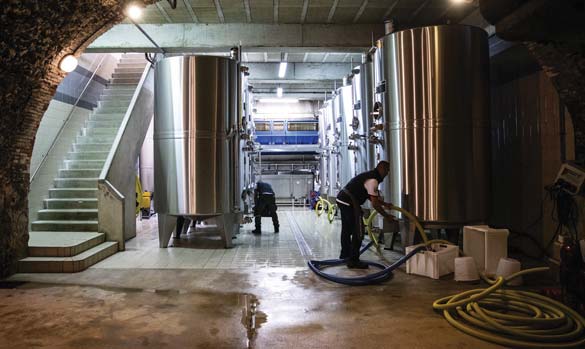 Its top prestige cuvée wines, the Comtes de Champagne Blanc de Blancs, are matured for 10 years in bottles before release to the market
Its top prestige cuvée wines, the Comtes de Champagne Blanc de Blancs, are matured for 10 years in bottles before release to the market
 Workers unload crates of Chardonnay grapes into a wine press following harvest
Workers unload crates of Chardonnay grapes into a wine press following harvest
 The wine spends typically six months in stainless steel tanks before going for bottling and further maturation
The wine spends typically six months in stainless steel tanks before going for bottling and further maturation
 Bottles are hand-turned in a process known as riddling to ensure deposits settle in the neck of the bottle and can be extracted
Bottles are hand-turned in a process known as riddling to ensure deposits settle in the neck of the bottle and can be extracted










.jpg)
